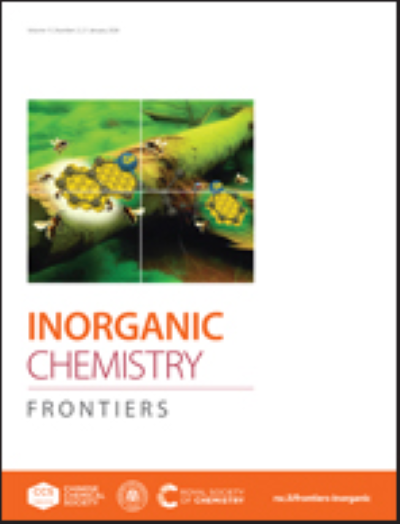Synergistic electrolyte engineering with TEABH4 additive: achieving oriented deposition and ultralong cycling in magnesium metal batteries
IF 6.4
1区 化学
Q1 CHEMISTRY, INORGANIC & NUCLEAR
引用次数: 0
Abstract
Simple magnesium salt Mg(CF3SO3)2-based electrolytes often exhibit elevated charge-transfer resistance at the electrode interface owing to surface adsorption phenomena. Herein, to overcome this limitation, tetraethylammonium borohydride (TEABH4) was used as a moisture scavenger to chemically control the moisture content. Moreover, the uniform coverage of TEA+ cations on the Mg anode surface regulated the Mg2+ reduction rate and enabled the epitaxial growth of magnesium metal deposited along the (002) crystal plane. Electrochemical evaluation showed that the modified electrolyte (MAT-G2) remained stable for over 3500 hours at a current density of 1 mA cm−2 and a capacity of 0.5 mA h cm−2. Additionally, the fabricated Mg||Cu cells achieved a high coulombic efficiency of 97.3% (over 2500 cycles). The critical current density of the cells reached 5.5 mA cm−2, achieving the highest value reported in similar works. This study underscores the critical role of eliminating water contamination and optimizing ion-transport kinetics in enhancing the performance of magnesium metal batteries.

TEABH4添加剂协同电解质工程:实现镁金属电池的定向沉积和超长循环
由于表面吸附现象,简单镁盐Mg(CF3SO3)2基电解质在电极界面处表现出较高的电荷转移电阻。为了克服这一限制,采用硼氢化四乙基铵(TEABH4)作为除湿剂来化学控制水分含量。此外,TEA+阳离子在Mg阳极表面的均匀覆盖调节了Mg2+的还原速率,使金属镁沿(002)晶面外延生长。电化学评价表明,改性后的电解质(MAT-G2)在电流密度为1 mA cm - 2、容量为0.5 mA h cm - 2的条件下,可保持3500小时以上的稳定性。此外,制备的Mg||Cu电池的库仑效率高达97.3%(超过2500次循环)。电池的临界电流密度达到5.5 mA cm−2,达到了同类研究中报道的最高值。该研究强调了消除水污染和优化离子传输动力学对提高镁金属电池性能的关键作用。
本文章由计算机程序翻译,如有差异,请以英文原文为准。
求助全文
约1分钟内获得全文
求助全文
来源期刊

Inorganic Chemistry Frontiers
CHEMISTRY, INORGANIC & NUCLEAR-
CiteScore
10.40
自引率
7.10%
发文量
587
审稿时长
1.2 months
期刊介绍:
The international, high quality journal for interdisciplinary research between inorganic chemistry and related subjects
 求助内容:
求助内容: 应助结果提醒方式:
应助结果提醒方式:


